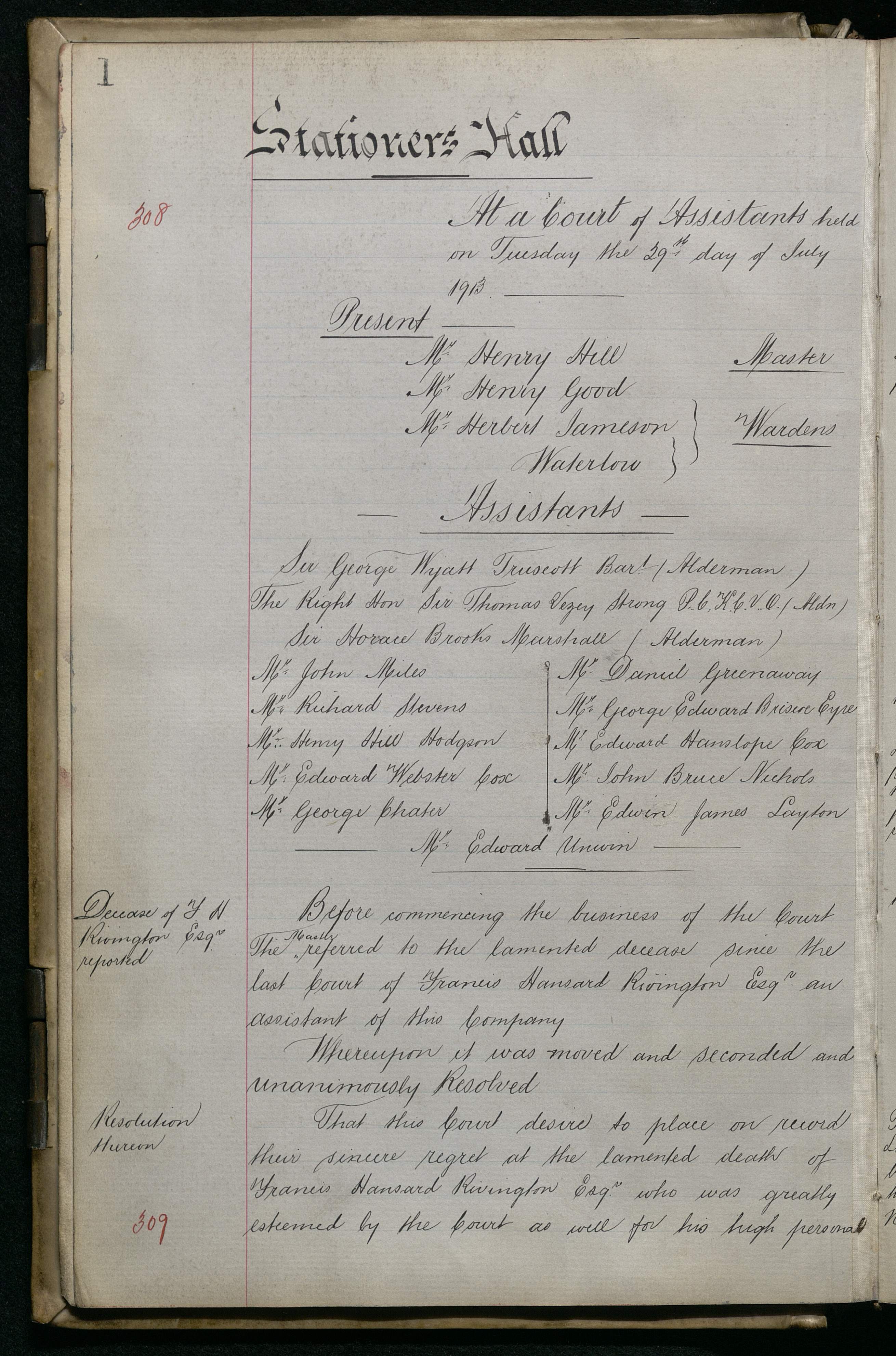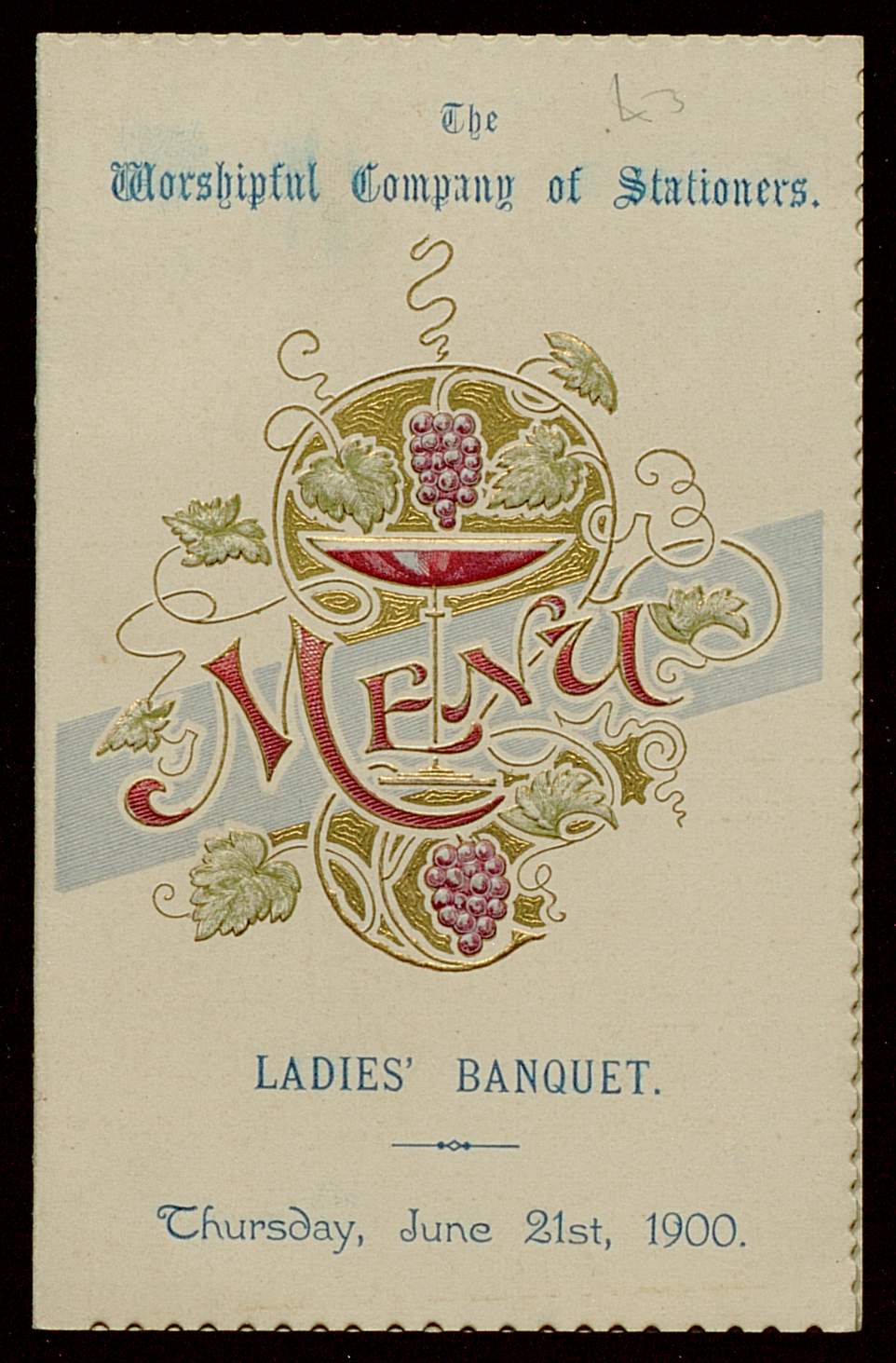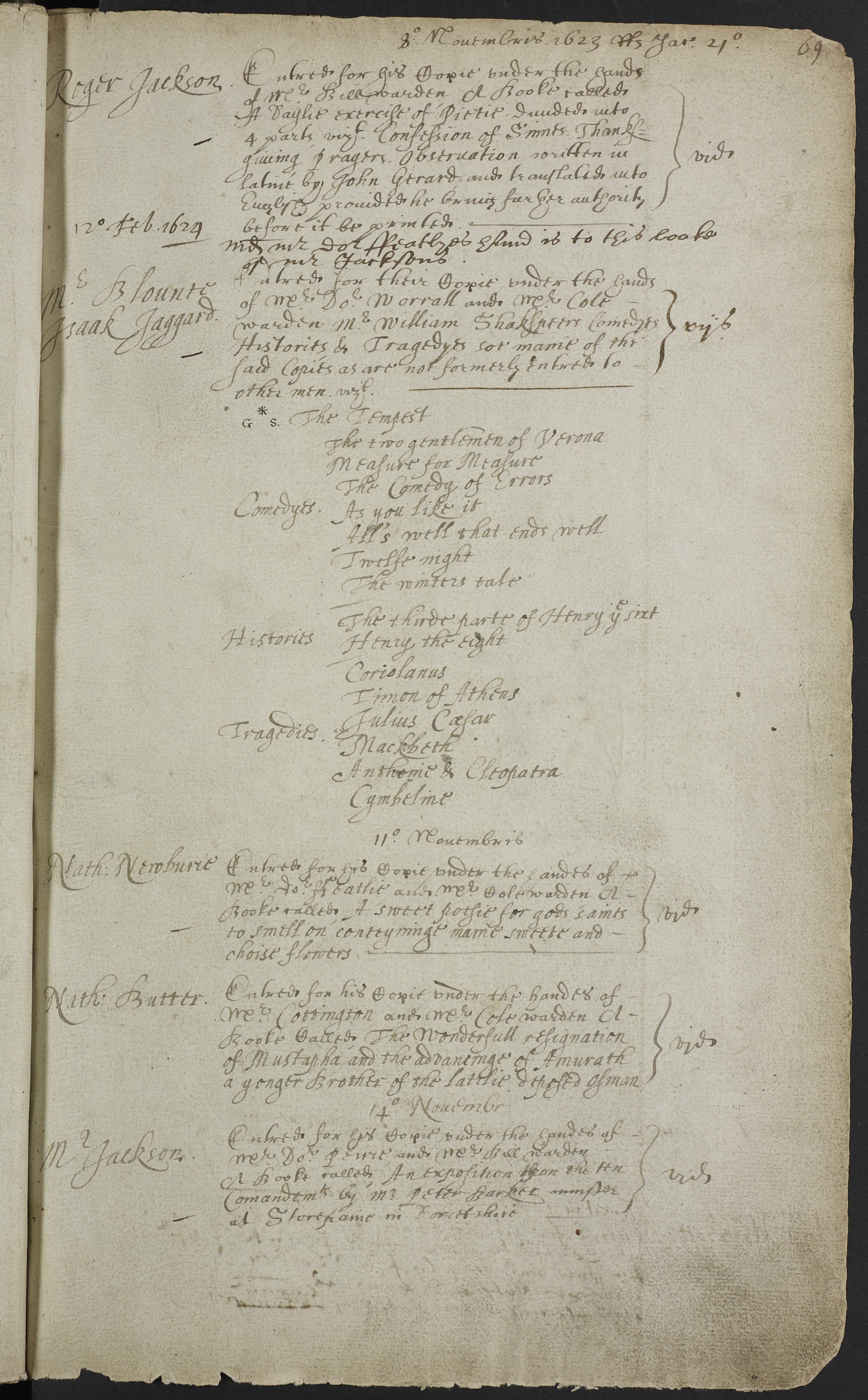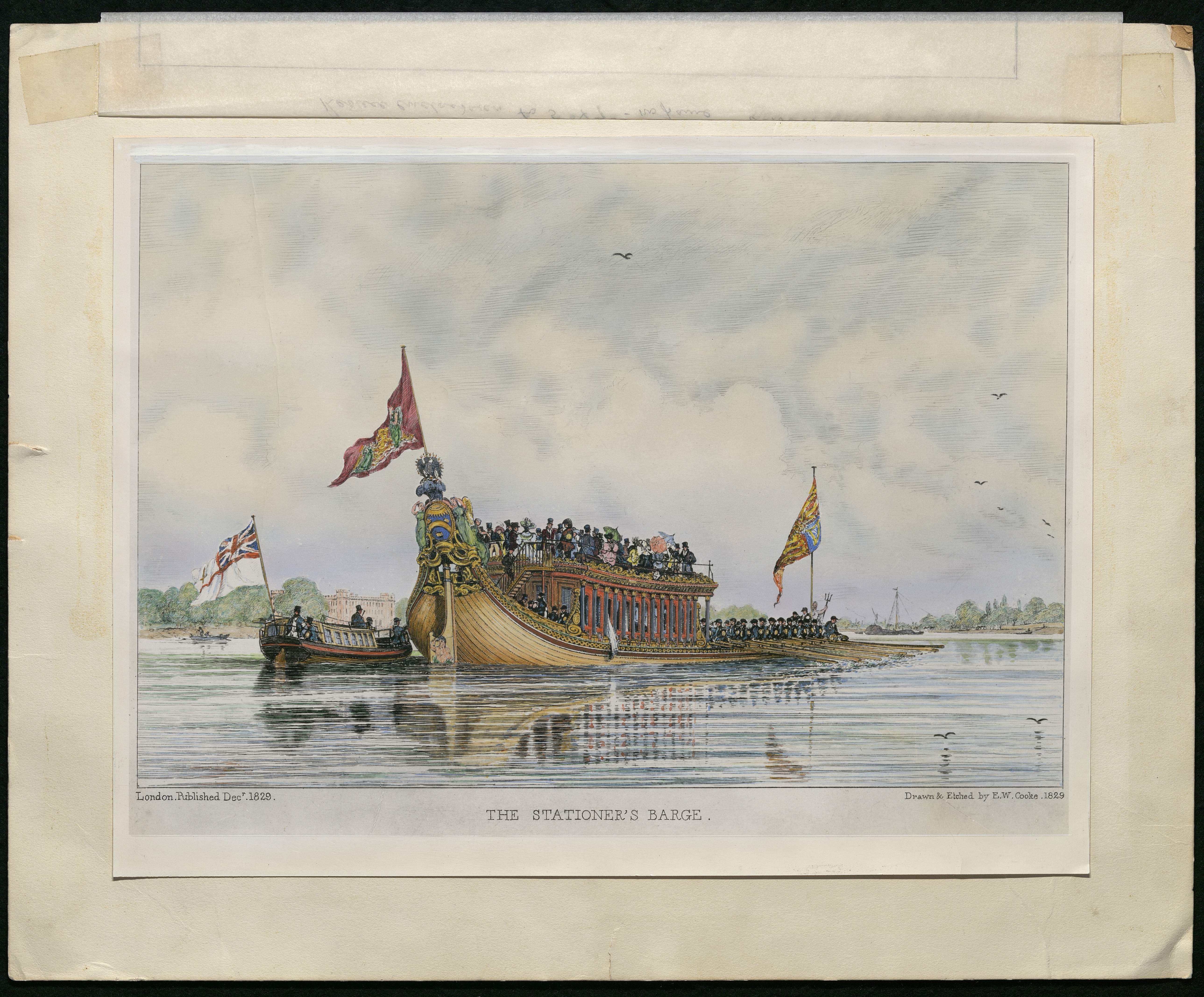Record Guides
The story of the book trade and the history of this unique livery company is told through the various archival documents from the Stationers’ Company archive including: Constitutional, Court, Membership, Financial, Trade, Administrative, Charity and Property Records. More information about the different record types can be found below:
Constitutional Records 
Examine founding documents such as charters, ordinances and key volumes such as Liber A to understand the origins of the Stationers’ Company and the Company’s rules and regulations.
Read more about Liber A in the essay Introducing Liber A by Dr Ian Gadd.
The Constitutional Records have been arranged into the following sections:
- TSC/1/A/01: Royal charters and related documents
- TSC/1/A/02: Ordinances and related documents
- TSC/1/A/03: Records relating to heraldic grants
- TSC/1/A/04: Royal and Governmental licences and related documents
- TSC/1/A/05: Memorandum book: Liber A
- TSC/1/A/06: Membership oaths
- TSC/1/A/07: Other constitutional records
Court Records
The Court Records allow us to discover the decisions that were made and passed in Court and are essential to our understanding of the working of the Stationers’ Company. The rough Court minute books contain information that was taken down by hand while Court was in progress whilst the formal Court minute books are the final versions. The two document types can be compared side by side to reveal why final orders were decided upon and uncover items that were omitted from the final version because of controversial or sensitive topics.
The Court Records also contain information about bindings of apprentices, charitable donations, pensioners and affairs of the English Stock.
The Court Records have been arranged into the following sections
- TSC/1/B/01: Court minute books
- TSC/1/B/02-04: Rough Court minutes
- TSC/1/B/05: Court minute extracts
- TSC/1/B/06: Court minute indices and abstracts
- TSC/1/B/07: Court attendance lists and other records
- TSC/1/B/08: Appendices to the Court orders
- TSC/1/B/09: Reports to the Court
- TSC/1/B/11: Declarations of loyalty records & Summonses
- TSC/1/B/13: Livery Committee papers
- TSC/1/B/14: Assorted committee minutes
Membership Records
The Membership Records can be used to extract valuable biographical information about members of the Company and the printing and publishing community. Apprentices and Masters can be traced using the Apprentice memorandum books and the Master and apprentice calendars.
The Membership Records have been arranged into the following sections:
- TSC/1/C/00: Masters records
- TSC/1/C/01: Livery records
- TSC/1/C/02: Company officers records
- TSC/1/C/03: Masters of apprentices records
- TSC/1/C/04: Freedom records
- TSC/1/C/05: Apprenticeship records
- TSC/1/C/06: Quarterage and general membership records
Financial Records
The Financial Records principally contain the fiscal accounts of the Company but also contain some English Stock data; the majority of which can be found in the Trade Records. The Financial Records reveal an enormous amount about the successes and losses experienced by the Company, times of financial growth and day-to-day running expenses for Stationers’ Hall. The General ledgers give an overview of the Company accounts for individuals, businesses and the Company, showing amounts paid in and out. Compared over many years the records can be analysed to research payments and expenditure and changes in tax and investments.
The Financial Records have been arranged into the following sections:
- TSC/1/D/02: Wardens' accounts
- TSC/1/D/03: Under wardens' accounts
- TSC/1/D/05: Sundry accounts
- TSC/1/D/06: Ledgers
- TSC/1/D/07: General ledgers
- TSC/1/D/08: Cash books
- TSC/1/D/10: Books of fines
- TSC/1/D/11: Wardens' vouchers
- TSC/1/D/12: Tax and rates, receipts and investments
- TSC/1/D/13: Income tax returns
- TSC/1/D/14: Corporation duty returns
- TSC/1/D/15: Assorted returns and balances
Trade Records
The Trade Records include the Entry Book of Copies, or Stationers’ Registers, the records of the English Stock and the Treasurers’ Vouchers 1734-1800, which detail English Stock payments for printing, paper and advertising almanacs. The Trade Records allow us to research the invention and development of the concept of copyright and the Company's successful publishing company the English Stock.
The Trade Records have been arranged into the following sections:
- TSC/1/E/03: Petitions and warrants
- TSC/1/E/06: Registers of entries of copies
- TSC/1/E/07: Draft register of entries of copies
- TSC/1/E/08: Transcripts of entries of copies
- TSC/1/E/10: Records of the Stationers' Hall Registry (voluntary Registry)
- TSC/1/E/11: Copyright administrative records
- TSC/1/E/12: Registers of books for deposit libraries
- TSC/1/E/13: Index to register of books for deposit libraries
- TSC/1/E/14: Registers of books for the British Museum
- TSC/1/E/15: Copy indentures for sending books to the Bodleian Library
- TSC/1/E/16: Deposit libraries administrative records
- TSC/1/E/17: Records relating to search and seizure
- TSC/1/E/English Stock: Records of the English Stock
General Administrative Records
The General Adminisrative Records include memoranda, reports, correspondence and other records collated by the Clerk. The records detail information about the Company’s coat of arms, the constitution and election of the Court of Assistants amongst other topics. The General Administrative Records also include records relating to events, feasts, ceremonies and celebrations held at Stationers' Hall.
The General Administrative Records have been arranged into the following sections:
- TSC/1/F/01: Clerks' correspondence
- TSC/1/F/02: Clerks' memorandum books
- TSC/1/F/03: Clerks' papers
- TSC/1/F/04: Records relating to heritage and records
- TSC/1/F/05: Records relating to events, ceremonies and celebrations
- TSC/1/F/06: Legal and administrative records concerning Company rights and membership
- TSC/1/F/07: Miscellaneous records
Charities and Property Records 
The Charities and Property Records relate to donations or bequests to the Company for charitable purposes, the charities and estates administered by the Company, and other Company property such as the barge, fire engine and the Hall. The Charity Records also include documents relating to the Stationers' Company School in existence 1858-1982. The property deeds are particularly interesting to discover what property and land was, and is, owned by the Stationers’ Company within the City of London.
The Charities and Property Records have been arranged into 8 sections:
- TSC/1/G/01: General charity records
- TSC/1/G/02: General estates records
- TSC/1/G/03: Records of individual charities
- TSC/1/G/04: Records of individual estates
- TSC/1/G/05: Company barge records
- TSC/1/G/06: Stationers' Hall records
- TSC/1/G/07: Movables records
- TSC/1/G/08: Property deeds and records of title


